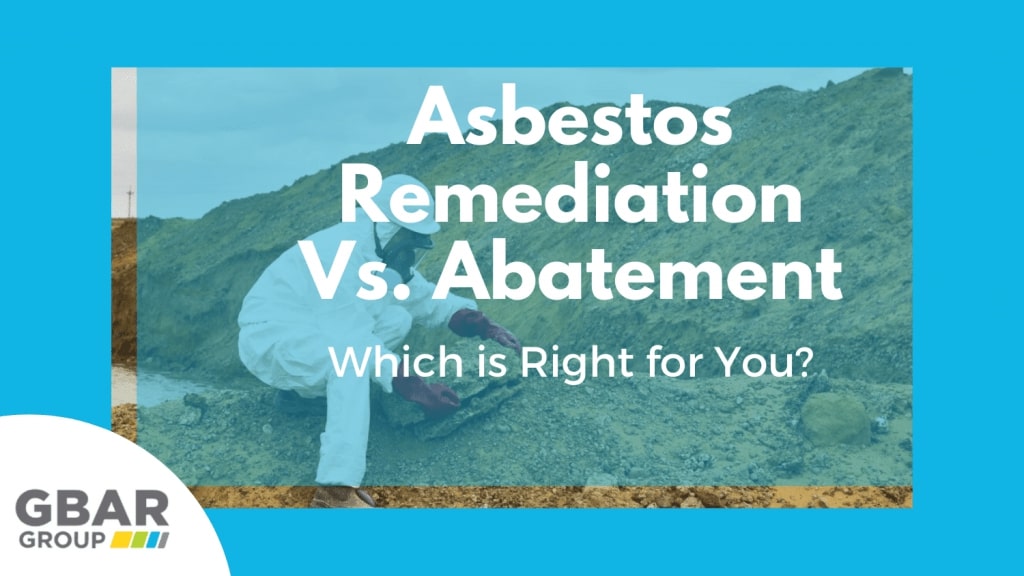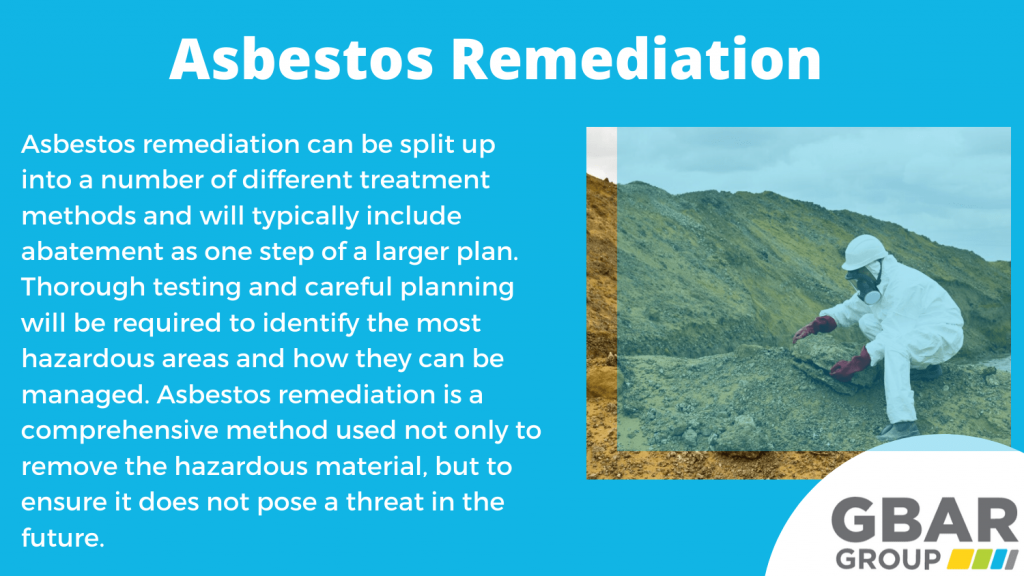
Asbestos abatement and remediation are both management techniques for reducing the risks posed by asbestos and asbestos-containing materials on a property. The terms “abatement” and “remediation” are often used interchangeably to describe the management and removal of asbestos materials and products.
Asbestos is a hazardous mineral that was previously favoured as a construction and manufacturing material in Australia. Phased out and eventually banned in 2003, asbestos was used so heavily that many older Australian homes today are contaminated with the material. Exposure to asbestos fibres is directly linked to the development of asbestos-related illnesses such as asbestosis, lung cancer, mesothelioma and pleural plaques.
With the growing awareness of the dangers of asbestos, more homeowners are taking the steps to consider whether their home contains any asbestos. If you own or work in an older building, an asbestos management plan is crucial to maintaining the safety of those living and working on the property. It is illegal to handle and manage friable asbestos without the appropriate licensing in Australia. When it comes to non-friable asbestos, professional removal is advised to ensure it does not pose a threat in the future.
Managing asbestos materials can be very difficult because of the necessary safety precautions when handling fragile and hazardous products. Henceforth, a professional asbestos removal company will take a comprehensive approach to safely handling asbestos contamination. If you know anything about asbestos, you’ve probably heard of the terms “asbestos abatement” and “asbestos remediation” to describe the different removal processes.
Asbestos Remediation vs. Abatement
With both remediation and abatement often used synonymously, it can be difficult to work out what your situation actually requires before engaging with a professional. Hopefully, this article will work to break down the differences between asbestos remediation vs. abatement, so you can make an informed and accurate decision on what is required to safely manage asbestos on your property.
Safe removal of asbestos is crucial to maintaining the security of your property. However, different asbestos situations require different approaches. It all depends on the asbestos problem itself, the location of the asbestos, the condition of the materials and the best way to manage it. Which poses the question of asbestos remediation vs. abatement – which strategy is right for your property?
What is Asbestos Remediation?

Asbestos remediation can be considered as a type of abatement. In the environmental and waste management industry, remediation refers to addressing the underlying cause of the hazardous material to reduce the likelihood of it returning and posing further risks in the future. For example, mould remediation refers to removing the mould and taking steps to prevent it from regrowing again with specialised chemical treatment.
In terms of asbestos, remediation processes often refer to asbestos-contaminated soils. Where fragments of non-friable asbestos (e.g. fibro cement) are identified on the soil surface, then the fragments may be removed by an appropriate treatment and remediation process. This will prevent the soil from posing a hazardous threat down the line.
Asbestos remediation can be split up into a number of different treatment methods and will typically include abatement as one step of a larger plan. Thorough testing and careful planning will be required to identify the most hazardous areas and how they can be managed. Asbestos remediation is a comprehensive method used not only to remove the hazardous material but to ensure it does not pose a threat in the future.
What is Asbestos Abatement?

The definition of abatement is to safely physically remove hazardous material from a structure or property. This includes entirely sealing off the contaminated area of the property, removing the contaminants, and thoroughly cleaning the area to prevent further contamination of the property.
Asbestos abatement is essentially the process of mitigating the risk of asbestos fibres being released into the air and creating a hazardous environment. While this often entails removing the asbestos materials entirely from the structure or property, it could also mean encasing or encapsulating the materials to ensure the fibres are comprehensively sealed in and prevented from being released into the air.
Asbestos Remediation Vs. Abatement – Which Strategy Should I Go With?
When discussing remediation vs abatement techniques, you first need to consider your specific conditions and the type of asbestos contamination that you are dealing with. Remediation refers to comprehensive asbestos management and treatment plan and, therefore, would be better suited to situations in which asbestos contamination is more complicated than physical removal.
Abatement focuses on the removal and encapsulation, and therefore, an abatement process would be best suited to more basic asbestos contamination situations, in which safe physical removal or encapsulation is enough to ensure the property is protected from asbestos fibre exposure.

It all comes down to what type of asbestos you are facing, the condition of the asbestos, the location of the asbestos contamination, and how you plan on managing it. In some cases, it may be safer to simply encapsulate the asbestos to ensure the fibres cannot be disturbed. In other cases, asbestos-containing materials may be visibly flaking or deteriorating and will require immediate physical removal. If asbestos fibres have already contaminated further areas of a property, a thorough remediation process may be the right strategy.
The best way to decipher between remediation vs abatement is to talk to a professional about the suspected asbestos materials, have the presence of asbestos confirmed with testing, and promptly managed by a licensed and qualified team. A professional asbestos specialist team like GBAR Group would be more than happy to advise on and support your decision on the best route for your asbestos-contaminated materials.
Asbestos Contaminated Soil
Asbestos-contaminated soil typically occurs when an older building containing asbestos is demolished. For many older properties, demolition has not properly included appropriate asbestos removal and disposal. The end result is materials that have been buried intact, broken up and mixed with other demolition wastes, or even potentially imported to site as a recycled aggregate or ground fill material.
Asbestos fibres do not migrate through the soil, so it’s not uncommon for high levels of asbestos to be found within the topsoil or fill material used in these areas. Soil contaminated with asbestos can release particles into the air the flow through the house, property, and land and pose an extra risk when disturbed by any digging or soil handling.
Asbestos contaminated soil has the potential to be very harmful, and therefore, should be remediated immediately. Depending on the level of contamination soil, remediation may be done by hand or using machines for excavation. An asbestos soil contaminated problem will be addressed with a full remediation strategy that includes comprehensive abatement and treatment.
Professional Asbestos Remediation & Abatement
Whether your property has been left with a minor asbestos-containing material or you have a serious asbestos contamination problem, you can trust the professionals at GBAR Group to safely address the job thoroughly. GBAR Group is licensed nation-wide, are fully accredited, insured, and have over 20 years of experience in the industry of asbestos and hazardous waste management.
GBAR Group’s specialist operatives are rigorously trained to ensure exceptional removal and remediation services. We assess each site, assist you in identifying, measuring, and quantifying the risk, provide advice and a request quote on removal options undertaken in accordance with occupational hygienists. We offer complete high-quality asbestos removal, abatement, remediation and management services in NSW, QLD, Sydney & Brisbane.






